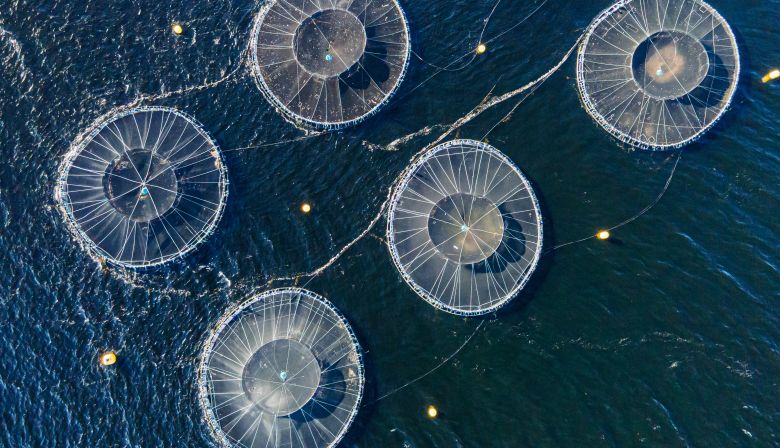
Subscribe & stay up-to-date with ASF
On a Sunday afternoon in January 2020, we went to a public meeting in Mahone Bay, Nova Scotia, a few minutes from our home. A neighbour had mentioned that the Twin Bays Coalition was going to discuss proposals by two multinational companies to locate more than 20 open-net salmon farms along the Nova Scotia coast.
Mahone Bay has a year-round population of around 1,000 people. But on that wintry afternoon, hundreds gathered to hear deep concerns from lobster fishers, environmentalists, and ordinary folks about the potential impact of these floating feedlots on the coastal waters and marine livelihoods.
Their fears struck a chord. Three decades earlier, we had seen the impact of a single salmon farm in the bay near Catherine’s parents’ home on the South Shore. Her father, Paul, was an avid salmon fisherman and, like the Atlantic Salmon Federation, he hoped such farms would ease pressure on the declining population of wild salmon. But it didn’t take long for Paul and the ASF to change their minds. That small farm created a dead zone, driving away lobsters and other marine life.

There is a danger in trying to distill two years of investigation into a handful of numbers, especially when you are addressing a knowledgeable audience like the Atlantic Salmon Federation. But here are some of the numbers that surprised us the most:
32 inches: A single photograph of a yardstick stuck to the 32-inch mark in a toxic stew of excrement, chemical residue, and excess feed showed us the seabed below a salmon farm down the coast in Port Mouton.
65,000 people: Many studies examined the impact of the waste dumped into the ocean by open-net salmon farms. But one study stood out: a single farm with 200,000 salmon dumped fecal matter equivalent to a city of 65,000 people.
$47 billion: A 2021 study by Just Economics concluded that poor salmon farming practices have cost the world’s economy $47 billion since 2013 through pollution, the spread of disease and parasites, and fish mortalities.
These numbers add up to a call to action for consumer groups, advocacy groups, government regulators and policy makers that we broke into three elements.
First, educate consumers about the health and environmental costs of farmed salmon. Grocery stores, restaurants, and the salmon farming industry itself need to be transparent about how and where the salmon you eat was raised about the health risks from chemical and antibiotic residue.
Second, translate individual concern into coordinated action to reform the industry and insist on proper government regulation. Governments must stop favoring salmon farmers over protecting the public and the environment. As members of the Atlantic Salmon Federation, you’re leading the way on this front. Redouble your efforts.
Finally, implement policies that encourage new technologies like recirculating aquaculture systems, which raise salmon in land-based tanks, free of chemicals and without the threat to wild salmon. As Jane Goodall said, “What you do makes a difference, and you have to decide what kind of a difference you want to make.”

We all love fishing stories and we want to hear yours. We are currently accepting submission to our RiverNotes publication—your story could be featured on our site! Checkout the submission form and we’ll see you on the River.